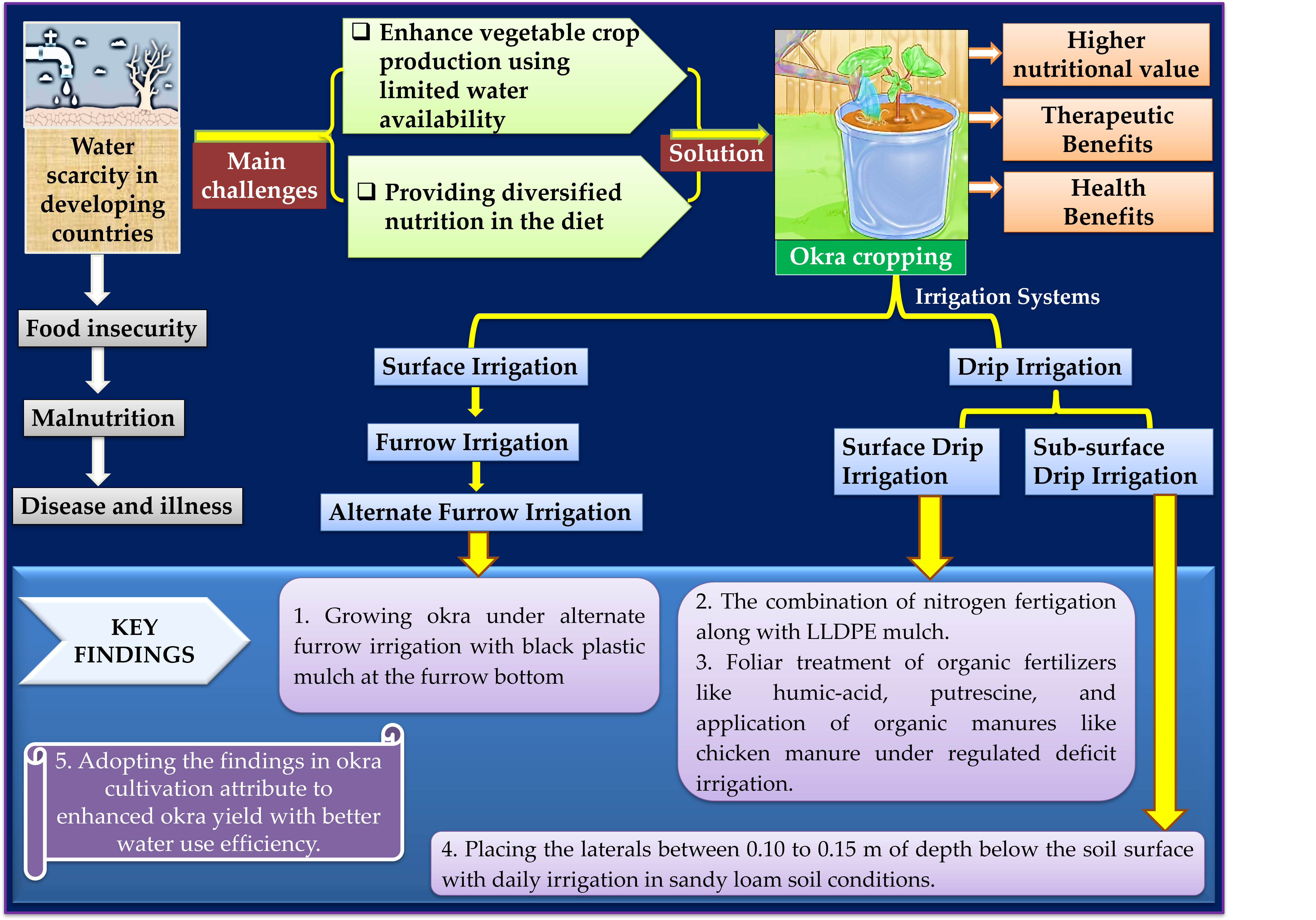Effect of surface and drip irrigation on growth, yield and water use efficiency of okra (Abelmoschus esculentus) – A Review
Keywords:
black plastic mulch, drip irrigation, okra, water use efficiency, yieldAbstract
Water scarcity is a major constraint in vegetable crop production and exacerbates food insecurity in developing countries. In future, promoting the cultivation and consumption of vegetables having diversified nutrients under suitable irrigation techniques would be an inevitable practice in mitigating the adverse consequences of food insecurity (i.e., malnutrition and diseases). Okra (Abelmoschus esculentus); a fruit vegetable, consumed in several countries to fight against poverty and malnutrition due to its rich nutrient content with impressive health benefits. However, okra cultivation during the dry season is mainly dependent upon water availability. Therefore, this review study is conducted to highlight; 1) the impact of surface and drip irrigation on the growth, yield, and water use efficiency (WUE) of okra, and 2) the effect of surface and drip irrigation in combination with fertilizer and mulch on growth and development of okra. According to the analysis of available literature, among surface irrigation methods, although furrow irrigation has been widely practiced among traditional farmers, growing okra under alternate furrow irrigation with black plastic mulch at the furrow bottom has a positive impact on increasing the WUE. On other hand, the combination of nitrogen fertigation along with mulching under a 25-micron thickness black plastic sheet is an effective means to achieve a better yield advantage under drip irrigation. Further, foliar treatment of organic fertilizers like humic acid, putrescine, and application of organic manures like chicken manure attribute to enhanced growth and quality okra pods under regulated deficit irrigation through the drip system. However, despite the surface drip irrigation, investing in sub-surface drip irrigation by placing the laterals between 0.10 to 0.15 m of depth below the soil surface with daily irrigation assures the better performance of okra in sandy loam soil conditions. This compilation will support future researchers, and farmers as an approach to sustainable okra production under water-scarce conditions according to the availability of resources.

Downloads
Published
How to Cite
License
Copyright (c) 2023 Ibrahim Imrana Farhan, Dr. M. Sugirtharan

This work is licensed under a Creative Commons Attribution-NonCommercial-NoDerivatives 4.0 International License.
The Authors hold the copyright of their manuscripts, and all articles are circulated under the terms of the Creative Commons Attribution License, which permits unrestricted use, distribution, and reproduction in any medium, as long as that the original work is properly cited.
The use of general descriptive names, trade names, trademarks, and so forth in this publication, even if not specifically identified, does not imply that these names are not protected by the relevant laws and regulations. The authors are responsible for securing any permissions needed for the reuse of copyrighted materials included in the manuscript.




